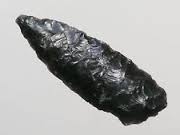The Lake County Sheriff’s Office and local Police Departments recently conducted a training session titled “Archaeological Violation Investigation Course”, and with the help of representatives from many of the area tribes, the course focused on crimes associated with looting Native American artifacts. Recent drought conditions have exposed several previously hidden archaeological sites around Clear Lake, which join hundreds of other historically and culturally significant sites associated with tribes such as the Koi Nation and the Pomo tribes.
The training came at an opportune time for one particular Sheriff’s deputy. It started when the deputy was told about a note someone had left for a 14-year-old girl at one of the shops on Main Street of Historic Lower Lake. The handwritten letter was from a man in a white commercial van, and contained inappropriate language. Concern about the letter led to the deputy contacting the suspected sexual predator.
According to Steve Brooks of the Sheriff’s Department, the deputy approached the man at noon on Saturday, August 22. He was standing behind the van with the double doors open, and when the deputy approached, he came toward him, explaining that he could explain the note. 41-year-old Brian Gene Smith, a transient from Lower Lake, told the deputy that he thought the girl was older, but he had only seen her from a distance when he felt compelled to contact her in writing.
When you are drunk or high and trying to explain yourself to a law enforcement officer, it is very difficult to hide your condition, no matter how confident you may be. The deputy surmised that Smith was under the influence of a “central nervous system stimulant” and asked the man if he would willingly submit to a series of tests to determine if he was under the influence of illegal drugs. This question just seemed to agitate Smith, according to the deputy. Smith told him that he only smokes marijuana, and if he was going to arrest him to “just do it!”
The deputy detained Smith, and had a look around the van. Through the open rear doors came the strong odor of marijuana, and a plastic baggie of pot was there in plain sight. With probable cause firmly established, the deputy continued a search of the van. A pair of pants was lying back there, with a loaded meth pipe in one of the pockets. But that wasn’t all, and the deputy’s recent training proved its value.
Also in the back of the van the deputy found an assortment of Native American artifacts, including obsidian spear and knife blades, and clay pottery bowls or fragments. Many of the artifacts were attached to index cards with details of the items, the date they were found, and where they were located and the depth of the soil if they were buried. The documentation, apparently in the same or similar handwriting of the note to the girl, was fairly thorough and impressive. The deputy, from his recent training, knew these were historically significant artifacts, likely from burial sites. He was also quite aware that removal of them is a felony offense for desecration of a Native American burial site. The deputy also located a flash drive, which turned out to have photos of Smith holding a rifle, and another man holding some of the obsidian points. The other man was not identified.
After completing the inspection, the deputy returned to Smith, who made an effort to explain himself once again. He said he was writing an archaeology book on the area tribes, and was planning on returning all the artifacts. Good intentions not being part of the law, Smith was arrested and charged with possession of Native American artifacts, removing items of archaeological interest, and vandalism. He was also charged with possession of marijuana, drug paraphernalia, and being under the influence of a controlled substance.
The deputy also contacted a genuine archaeologist to help review the seized items to help determine where they were from, their cultural significance, and, after the investigation, return them to the appropriate tribes or the Lake County Historical Society for proper collection or display.
Read More: Lake County News
